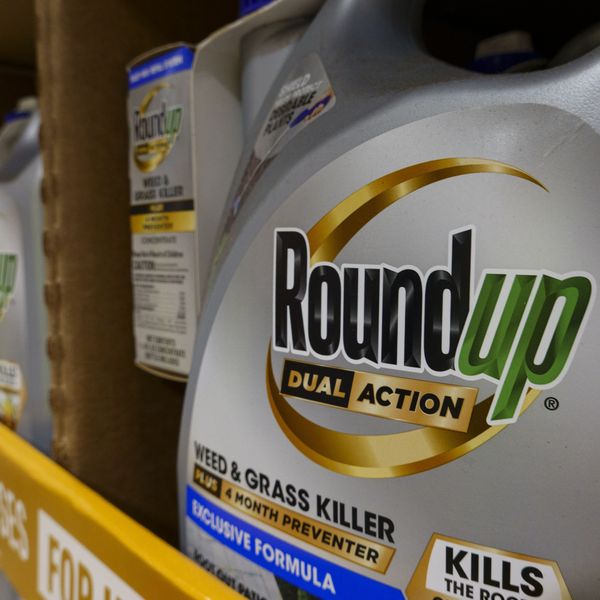After Decades, Fake Tire Reefs 'Killing and Smothering' Real Coral
"People who see it for the first time come to the surface and say, 'Oh, my God.'"
Florida officials have restarted cleanup of hundreds of thousands of tires dumped into the ocean decades ago in hopes of creating an artificial reef.
According to Allison Schutes, manager of the Trash Free Seas program at the Ocean Conservancy, between one and two million tires were dropped into the waters around Florida in the 1970s in an effort to bolster the ecosystem, but the marine life in the area did not adapt to their presence--and the tires started killing off existing, natural reefs.
"The ocean has ever-changing currents and storms, and they're moving around and smothering and killing natural coral," Schutes told Reuters on Friday.
"There are just tires for as far as you can see," Pat Quinn, a biologist for Broward County who is serving as local project manager, told Reuters. "People who see it for the first time come to the surface and say, 'Oh, my God.'"
In 2007, the Associated Press reported on the disastrous effects of the project:
Little sea life has formed on the tires. Some of the tires that were bundled together with nylon and steel have broken loose and are scouring the ocean floor across a swath the size of 31 football fields. Tires are washing up on beaches. Thousands have wedged up against a nearby natural reef, blocking coral growth and devastating marine life.
...In fact, similar problems have been reported at tire reefs worldwide.
"They're a constantly killing coral-destruction machine," said William Nuckols, coordinator for Coastal America, a federal group involved in organizing a cleanup effort that includes Broward County biologists, state scientists and Army and Navy salvage divers.
The resumed cleanup effort is focused on the artificial Osborne Reef, near the Hugh Taylor Birch State Park, where 700,000 tires were dropped. Divers first began the cleanup effort in 2008, pulling up nearly 62,000 tires at the time, but the effort stalled because the team responsible for the project became involved in more urgent matters.
"We were fighting two wars, and there were natural disasters," Quinn said. "When the earthquake happened in Haiti it was the same team who helped clear the port," referring to damaged piers that received vital relief supplies for survivors of the 2010 disaster.
The project is expected to take another two years to complete.
It will still leave half a million tires on a strip of ocean floor measuring 1,000 feet long and 150 feet wide. Those will stay in place because they are crusted with some marine life or would be too dangerous to move, officials said.
Meanwhile, the recovered tires will be "trucked across the state to Florida's west coast and burned for energy at a Wheelebrator Technologies renewable waste plant near Tampa, owned by private equity firm Energy Capital Partners," Reuters reports.
An Urgent Message From Our Co-Founder
Dear Common Dreams reader, The U.S. is on a fast track to authoritarianism like nothing I've ever seen. Meanwhile, corporate news outlets are utterly capitulating to Trump, twisting their coverage to avoid drawing his ire while lining up to stuff cash in his pockets. That's why I believe that Common Dreams is doing the best and most consequential reporting that we've ever done. Our small but mighty team is a progressive reporting powerhouse, covering the news every day that the corporate media never will. Our mission has always been simple: To inform. To inspire. And to ignite change for the common good. Now here's the key piece that I want all our readers to understand: None of this would be possible without your financial support. That's not just some fundraising cliche. It's the absolute and literal truth. We don't accept corporate advertising and never will. We don't have a paywall because we don't think people should be blocked from critical news based on their ability to pay. Everything we do is funded by the donations of readers like you. Will you donate now to help power the nonprofit, independent reporting of Common Dreams? Thank you for being a vital member of our community. Together, we can keep independent journalism alive when it’s needed most. - Craig Brown, Co-founder |
Florida officials have restarted cleanup of hundreds of thousands of tires dumped into the ocean decades ago in hopes of creating an artificial reef.
According to Allison Schutes, manager of the Trash Free Seas program at the Ocean Conservancy, between one and two million tires were dropped into the waters around Florida in the 1970s in an effort to bolster the ecosystem, but the marine life in the area did not adapt to their presence--and the tires started killing off existing, natural reefs.
"The ocean has ever-changing currents and storms, and they're moving around and smothering and killing natural coral," Schutes told Reuters on Friday.
"There are just tires for as far as you can see," Pat Quinn, a biologist for Broward County who is serving as local project manager, told Reuters. "People who see it for the first time come to the surface and say, 'Oh, my God.'"
In 2007, the Associated Press reported on the disastrous effects of the project:
Little sea life has formed on the tires. Some of the tires that were bundled together with nylon and steel have broken loose and are scouring the ocean floor across a swath the size of 31 football fields. Tires are washing up on beaches. Thousands have wedged up against a nearby natural reef, blocking coral growth and devastating marine life.
...In fact, similar problems have been reported at tire reefs worldwide.
"They're a constantly killing coral-destruction machine," said William Nuckols, coordinator for Coastal America, a federal group involved in organizing a cleanup effort that includes Broward County biologists, state scientists and Army and Navy salvage divers.
The resumed cleanup effort is focused on the artificial Osborne Reef, near the Hugh Taylor Birch State Park, where 700,000 tires were dropped. Divers first began the cleanup effort in 2008, pulling up nearly 62,000 tires at the time, but the effort stalled because the team responsible for the project became involved in more urgent matters.
"We were fighting two wars, and there were natural disasters," Quinn said. "When the earthquake happened in Haiti it was the same team who helped clear the port," referring to damaged piers that received vital relief supplies for survivors of the 2010 disaster.
The project is expected to take another two years to complete.
It will still leave half a million tires on a strip of ocean floor measuring 1,000 feet long and 150 feet wide. Those will stay in place because they are crusted with some marine life or would be too dangerous to move, officials said.
Meanwhile, the recovered tires will be "trucked across the state to Florida's west coast and burned for energy at a Wheelebrator Technologies renewable waste plant near Tampa, owned by private equity firm Energy Capital Partners," Reuters reports.
Florida officials have restarted cleanup of hundreds of thousands of tires dumped into the ocean decades ago in hopes of creating an artificial reef.
According to Allison Schutes, manager of the Trash Free Seas program at the Ocean Conservancy, between one and two million tires were dropped into the waters around Florida in the 1970s in an effort to bolster the ecosystem, but the marine life in the area did not adapt to their presence--and the tires started killing off existing, natural reefs.
"The ocean has ever-changing currents and storms, and they're moving around and smothering and killing natural coral," Schutes told Reuters on Friday.
"There are just tires for as far as you can see," Pat Quinn, a biologist for Broward County who is serving as local project manager, told Reuters. "People who see it for the first time come to the surface and say, 'Oh, my God.'"
In 2007, the Associated Press reported on the disastrous effects of the project:
Little sea life has formed on the tires. Some of the tires that were bundled together with nylon and steel have broken loose and are scouring the ocean floor across a swath the size of 31 football fields. Tires are washing up on beaches. Thousands have wedged up against a nearby natural reef, blocking coral growth and devastating marine life.
...In fact, similar problems have been reported at tire reefs worldwide.
"They're a constantly killing coral-destruction machine," said William Nuckols, coordinator for Coastal America, a federal group involved in organizing a cleanup effort that includes Broward County biologists, state scientists and Army and Navy salvage divers.
The resumed cleanup effort is focused on the artificial Osborne Reef, near the Hugh Taylor Birch State Park, where 700,000 tires were dropped. Divers first began the cleanup effort in 2008, pulling up nearly 62,000 tires at the time, but the effort stalled because the team responsible for the project became involved in more urgent matters.
"We were fighting two wars, and there were natural disasters," Quinn said. "When the earthquake happened in Haiti it was the same team who helped clear the port," referring to damaged piers that received vital relief supplies for survivors of the 2010 disaster.
The project is expected to take another two years to complete.
It will still leave half a million tires on a strip of ocean floor measuring 1,000 feet long and 150 feet wide. Those will stay in place because they are crusted with some marine life or would be too dangerous to move, officials said.
Meanwhile, the recovered tires will be "trucked across the state to Florida's west coast and burned for energy at a Wheelebrator Technologies renewable waste plant near Tampa, owned by private equity firm Energy Capital Partners," Reuters reports.

